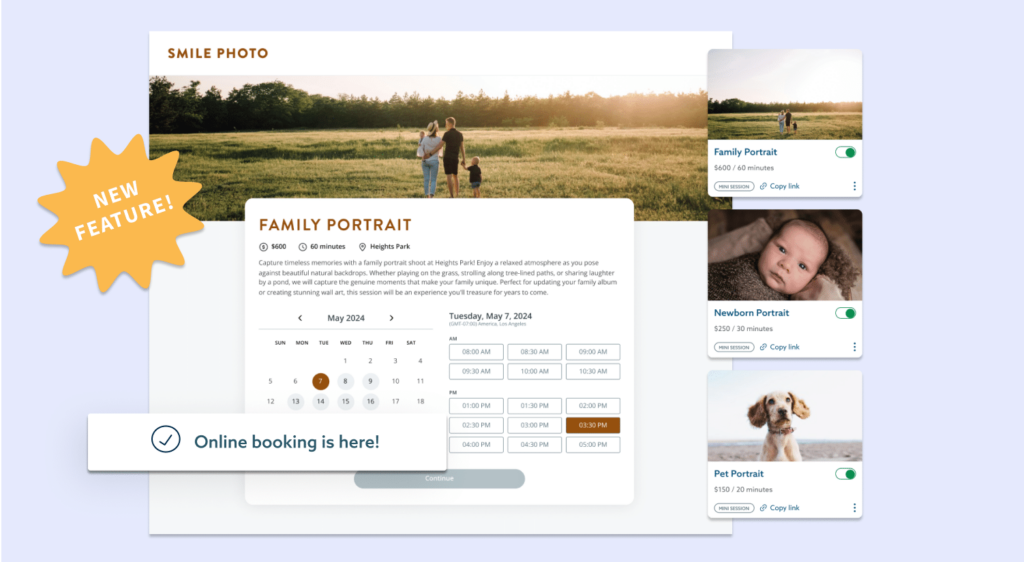
In today’s unpredictable economy, having a second income stream isn’t just nice—it’s becoming necessary. And if you’ve got an eye for composition and a decent camera gathering dust, you might be sitting on an untapped opportunity. Photography isn’t just a creative outlet; it’s a legitimate side hustle that can generate serious income with relatively low startup costs compared to other businesses.

You’re probably wondering if your skills measure up, how to find clients, or if you need expensive gear. Let me walk you through exactly how to transform your photography passion into a profitable side hustle, even during economic uncertainty.
Why Photography Makes an Ideal Side Hustle Right Now
Economic anxiety is a thing at the moment, but don’t let it cripple you. People still celebrate birthdays, get engaged, have babies, and need professional headshots. Some things don’t stop, even when wallets are tightening.
Photography as a side hustle offers some serious advantages:
- Low barrier to entry: You likely already own the basic equipment
- Flexible scheduling: Perfect for balancing with a full-time job
- Scalable income: Start small with friends and family, then grow
- Creative fulfillment: Unlike many side gigs, this one can feed your soul too
The digital era has actually made photography more accessible than ever. You don’t need a fancy studio space when natural light and interesting outdoor locations exist everywhere. And platforms like Instagram have transformed how photographers market themselves, making it possible to build a following without massive advertising budgets.
Getting Started: The Essentials (Without Going Broke)
Let’s talk gear and setup—but don’t worry, I’m not about to suggest you burn through your emergency fund.
The Equipment Basics
Here’s what you actually need to start:
- A decent camera: This could be a DSLR, mirrorless, or even a high-end smartphone camera for certain types of photography
- One versatile lens: A 50mm lens is affordable and incredibly versatile
- Editing software: Free options like GIMP or affordable subscriptions to Lightroom work great
- Reliable storage: External hard drives and cloud storage to protect client images

Notice what’s not on this list? Expensive studio lighting, multiple specialty lenses, or top-of-the-line gear. Those can come later as you reinvest your earnings.
Setting Up Your Business Foundation
While shooting is the fun part, don’t skip these crucial business steps:
- What do you want to shoot: Family portraits? Product photography? Events? Specializing helps you stand out, but at this point, you can TAKE IT ALL.
- Create a simple portfolio website: Use user-friendly platforms like Squarespace or the ShootProof Portfolio website to showcase your work.
- Set up business social accounts: Instagram and Pinterest are particularly important for photographers. TikTok too, if you’re feeling up to it.
- Establish basic pricing: Research what others charge in your area and decide what you feel comfortable charging.
One of the smartest early investments you can make is in a client management system like ShootProof. ShootProof helps you manage the business side so you can focus on shooting. You can create client galleries, accept online payments, deliver digital downloads, and even sell prints—all automated and professional looking. It makes you appear established from day one, which is crucial for building trust.
Finding Your First Paying Clients (Without Feeling Awkward)
The client question is what stops many talented photographers from taking the leap. Here’s the step-by-step approach that worked for me:
Start With Your Network
Your first clients are probably already in your contact list:
- Let friends and family know you’re offering sessions (with a friends and family discount)
- Ask colleagues if they need updated professional headshots
- Reach out to local small business owners who might need product photos

The key is being direct: “I’m launching a photography side business focusing on [your niche]. I’d love to offer you a special rate for a session to help build my portfolio.”
Create a Word of Mouth Referral System
Early clients can become your marketing team:
- Offer a discount on future sessions when clients refer someone new
- Create shareable digital assets clients can post on social media
- Follow up after sessions with referral requests
Partner With Complementary Businesses
Think about businesses that serve the same client base:
- Wedding planners (if you do engagement photos)
- Real estate agents (if you do property photography)
- Small business consultants (if you do headshots and branding)

Approach them with a mutually beneficial proposal: “I’d love to offer your clients a special photography package that complements your services.”
Pricing Strategies That Value Your Work (While Attracting Clients)
Pricing is where many new photographers stumble. Charge too little, and you’ll burn out. Charge too much too soon, and you might struggle to book clients.
The Tiered Approach
Consider creating three package options:
- Basic package: Session fee + 5-10 digital images
- Standard package: Session fee + 15-20 images + a few prints
- Premium package: Extended session + all digital images + print credit
This gives clients options while ensuring you’re compensated fairly for your time.
Don’t Forget These Revenue Streams
The session fee isn’t your only income opportunity:
- Print sales: Clients often want physical prints but don’t know where to order quality products
- Digital image packages: Offering additional images beyond the basic package
- Mini-session events: Book multiple short sessions on the same day for efficiency

ShootProof’s integrated storefront turns every client gallery into a potential additional revenue source. Clients can order professional prints directly through your gallery, and you set the markup. Many photographers find they make more from print sales than from the original session fee!
Managing the Business Side (Without Losing Your Mind)
The creative side of photography is probably what drew you in, but the business aspects will determine your success.
Client Management Made Simple
From inquiry to delivery, each client interaction matters:
- Create email templates for common client questions
- Set up an automated booking system
- Establish a clear workflow for editing and delivery
Tax and Legal Considerations
Even as a side hustle, photography is a business:
- Track all expenses (gear, software, travel)
- Set aside money for taxes (typically 25-30% of profit)
- Consider a simple liability insurance policy

The good news? Many photography expenses are tax-deductible, including your ShootProof subscription, equipment, and even a portion of your home if you edit there.
Standing Out in a Crowded Market
Let’s address the elephant in the room: there are a lot of photographers out there. A s#!+ load. Here’s how to differentiate yourself:
Develop a Recognizable Style
- Consistency in editing creates a branded look
- Focus on a specific emotion or aesthetic in your work
- Let your unique perspective shine through

Exceptional Client Experience
The actual photos are just part of what clients pay for:
- Guide clients on what to wear and what to expect
- Make the session fun and comfortable
- Deliver faster than promised
- Follow up after delivery
ShootProof helps elevate the client experience with beautiful, branded galleries that clients love to share. That “wow” moment when they first see their gallery can turn a satisfied client into an enthusiastic advocate.
Balancing Your Day Job and Photography Side Hustle
The “hustle” part of side hustle can be challenging. Here’s how to maintain sanity:
Time Management Strategies
- Block specific days/times for shooting and editing
- Batch similar tasks (editing multiple sessions at once)
- Set clear boundaries with clients about your availability

When to Scale Up
Watch for these signs that it might be time to go bigger:
- Consistently booked 3+ months in advance
- Turning away clients regularly
- Earning at least 50% of your day job income
The Reality Check: Challenges and How to Overcome Them
Let’s address the potential hurdles:
Seasonal Fluctuations
Most photography businesses experience busy and slow seasons. Plan for this by:
- Offering special promotions during traditionally slow times
- Developing alternate photography revenue streams, like holiday sales
- Using slow periods for education and portfolio building
Preventing Burnout
The excitement of a new venture can lead to overcommitment:
- Set realistic client loads based on your available time
- Build in buffer time for unexpected editing challenges
- Schedule regular breaks to nurture your creativity

Remember that quality trumps quantity—each client deserves your full attention. It’s better to serve fewer clients exceptionally well than to disappoint many with rushed work.
Your Next Steps: Action Plan for Week One
Ready to start? Here’s your first-week plan:
- Day 1: Define your photography niche and the clients you plan to target
- Day 2: Assess your equipment and make a list of essential purchases
- Day 3: Set up your ShootProof account and create your pricing structure
- Day 4: Develop a simple portfolio (even with personal projects)
- Day 5: Create social media accounts and basic website
- Day 6: Make a list of 20 potential first clients from your network
- Day 7: Reach out to five people on that list with a special offer
Notice how quickly you can go from idea to implementation? Within one week, you can have the foundation of your photography side hustle in place.
Economic uncertainty doesn’t have to mean putting dreams on hold. In fact, it might be precisely the right time to develop additional income streams doing something you love. Photography offers that rare combination of creative fulfillment and profit potential, with relatively low startup costs.
With platforms like ShootProof handling the business infrastructure, you’re free to focus on what you do best—creating beautiful images that clients love and want to purchase.
Build a Beautiful Business.
Remember, every established photographer started exactly where you are now—with a camera, a passion, and their first nervous client. The difference between those who succeed and those who just dream about it comes down to taking that first step.
Beautiful Photos by Sarah Botta Photography


